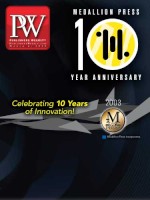For most authors the worst fate is to be ignored, and they spend long hours promoting themselves and their books on social media to make sure that doesn’t happen. Yet the biggest obstacle to discovery may be authors’ own Web sites, where visitors eager to learn more about their books and who are perhaps interested in buying them encounter a frustrating array of challenges.
This is particularly true in the case of authors who are putting their old books back into print. As a publisher specializing in reissues, I find that some authors seem to be doing everything they can to make it hard for readers to buy their books. And hey, agents, don’t go away—this is for you, too. These are your clients.
Here are some commonly committed sins:
● Covers of dead books: If your book is out of print, why are you displaying the old cover? And worse, why are you linking to the page on Amazon where the only copies sold are used ones (for which you make no money on sales)? If there is a new edition, you should be displaying that cover and linking to your publisher’s buy page.
● Covers to nowhere: It isn’t enough to paste the image of your cover onto your Web site; it must also be linked to retailers’ sites. Your Web site isn’t a picture gallery; it’s a sales tool. Yet in all too many instances, the cover displayed is just a JPEG that isn’t linked to anything.
● Links to only one retailer: If your book is sold by many retailers, why are you linking only to Amazon? Unless you have an exclusive relationship with Amazon, you should also have links to Barnes & Noble.com, Kobo, iBookstore, and all other sites where your book is offered.
● Links to nowhere: It goes without saying that all of your links should point to the correct Web sites. But if a link only points to the homepage of Random House, for instance, and makes visitors work hard to find your book within the site, how is that going to help you sell the book? Every publisher has a dedicated page for each book in its list, and those pages usually display buy options. The publisher’s page for your book is where you want your visitor to land—and the title and cover of your book should link to the URL for that page wherever they appear on your Web site.
● Bio? Reviews? Blurbs? Inclusion of this information is a no-brainer, but even here authors need to be smarter. Biographical information can be long and tedious; display a short bio but link it to a lengthier version on another page for those wishing to know every detail of your personal history. Reviews are often reproduced in their entirety. Who has time to read them? Just lift the most important quotes from the most well-known reviewers. If you have a substantial bibliography, display all of your covers and link them to retail sites where the books may be purchased.
● To agents: Understandably, some authors are not tech savvy and some lack the time or money to make their sites minimally interactive. Given the tools available today, creating a useful Web site costs very little of either. This may be a good place for literary agents to step in. The age when such activities could reliably be left to one’s publisher ended at the turn of the 21st century, yet many agencies do not provide technical services to their clients. Creating and maintaining Web sites for authors, or even hosting author pages on the agency’s own site, will strengthen author-agent bonds. These pages will pay for themselves, and then some, through commissions on increased sales.
● To estates: These observations are particularly applicable in the case of estates. Though the resuscitation of backlists of deceased writers is one of the most exciting aspects of the e-book revolution, not every deceased author is an immortal. Many of them must be rebranded to appeal to a new generation. Sadly, few heirs or estate administrators want to invest in initiatives to revive the fame of dead authors. That responsibility falls either to the new publishers or the agents for the estates. Creating Web sites for deceased authors is imperative.
Remember that fans have limited time and patience. Their goal might be described as Veni, Vidi, Emi (I came, I saw, I purchased). They want to promptly see what they came to see, and if their impulse is to buy it, they should be able to do so in one or two clicks. If there is any impediment to satisfying that impulse on your site, you will have no one to blame but yourself for being ignored.



 Volume 260
Issue 09
03/04/2013
Volume 260
Issue 09
03/04/2013





